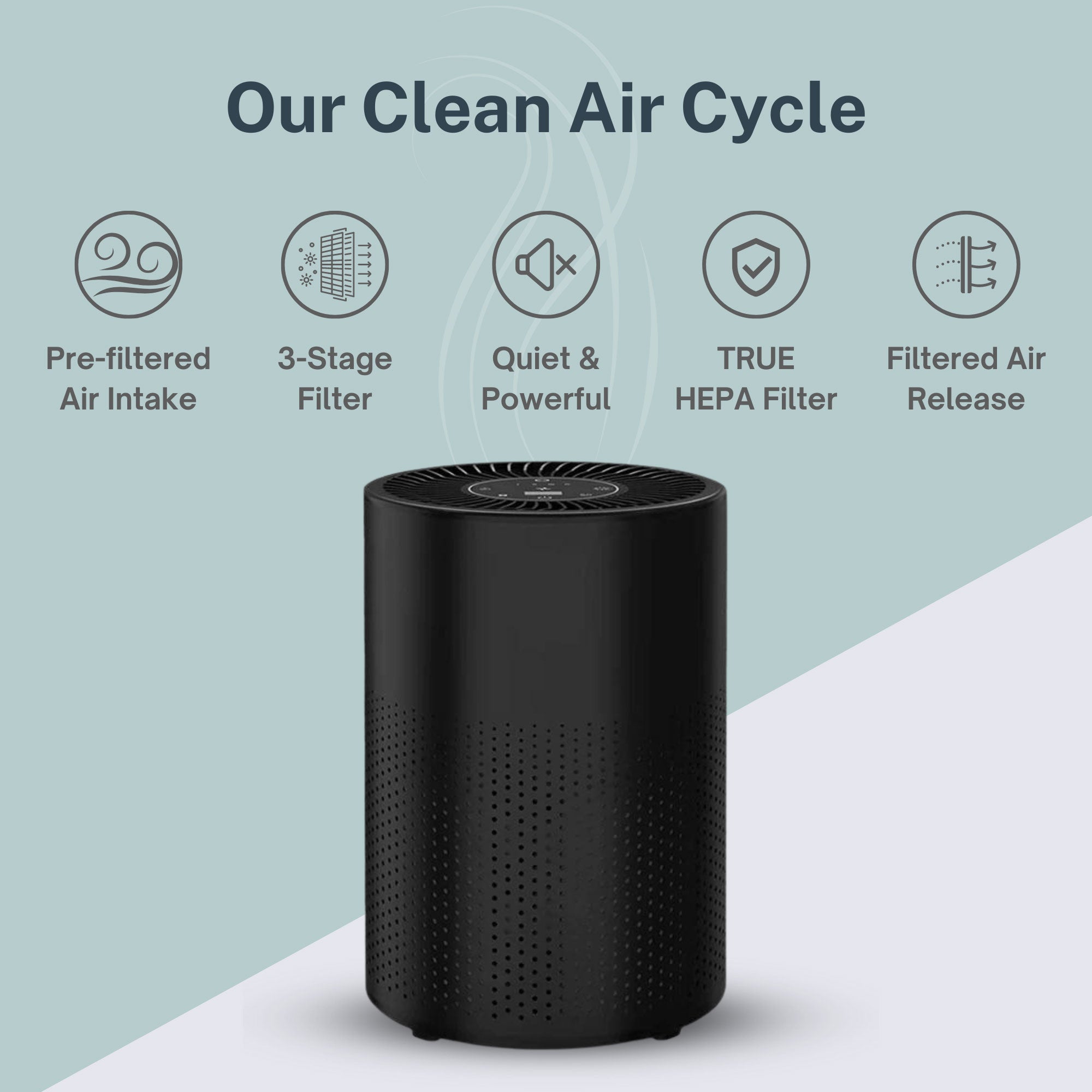In an era where data flows like oxygen through the scientific community, the Environmental Protection Agency has quietly launched a revolutionary approach to understanding how air pollution affects human health. The recently developed inTelligence And Machine lEarning (TAME) Toolkit represents a significant leap forward in how researchers analyze massive environmental health datasets—potentially changing how we protect vulnerable populations from invisible threats in our air, water, and surroundings.
The Data Science Revolution in Environmental Health
Environmental health research stands at a critical inflection point. Traditional methods of studying pollution's health impacts have relied on time-intensive laboratory studies and limited population samples. Today, researchers can analyze electronic health records from millions of individuals, sequence entire genomes, and monitor thousands of molecular biomarkers simultaneously—all generating unprecedented volumes of data that contain hidden patterns linking environmental exposures to health outcomes.
This "big data" approach isn't just about having more information—it's about unlocking entirely new insights that weren't possible with conventional methods. As the EPA notes, these approaches allow scientists to "examine vulnerable populations with unprecedented precision and detail while also evaluating hundreds of thousands of molecular biomarkers" to understand exactly how environmental exposures trigger disease.
The challenge has been bridging the training gap between environmental health researchers who understand the biological questions and the advanced computational methods needed to analyze these massive datasets. The TAME Toolkit directly addresses this critical need.
Inside the TAME Toolkit: Democratizing Advanced Analytics
Developed by a collaborative team of researchers, the TAME Toolkit provides accessible training modules that help environmental scientists "TAME" their data—organizing, analyzing, and extracting meaningful insights from complex datasets. Published in Frontiers in Toxicology in 2022, this comprehensive resource targets everyone from students to seasoned professionals looking to adopt cutting-edge data analysis techniques.
The toolkit's three-chapter structure builds progressive competency in essential data science skills:
- Introductory Data Science Fundamentals: Starting with basic R programming and data organization, these modules help researchers visualize data trends and implement FAIR (Findability, Accessibility, Interoperability, and Reusability) data management practices—ensuring that valuable environmental health data becomes a shared scientific resource.
- Chemical-Biological Analyses and Predictive Modeling: More advanced modules cover dose-response modeling, machine learning applications, mixtures analyses, and toxicokinetic modeling—all critical for understanding how complex environmental exposures affect human biology.
- Database Mining and Integration: The final section teaches researchers to leverage existing databases of chemical exposures, health outcomes, and environmental justice indicators—connecting disparate datasets to reveal patterns that might otherwise remain hidden.
By making these resources freely available through GitHub, the EPA has democratized access to sophisticated analytical techniques that were previously accessible only to those with specialized training in data science.
Beyond Traditional Evidence: New Frontiers in Air Pollution Research
The EPA's investment in data science capabilities comes at a crucial moment for air quality research. Despite decades of regulation, air pollution remains a significant public health concern, with vulnerable populations experiencing disproportionate impacts. Traditional research approaches have identified broad risk patterns, but big data offers the potential to identify specific populations, genetic factors, and biological mechanisms that explain why some individuals face greater health risks from identical exposures.
Using electronic health records, advanced cellular models that mimic human tissues, molecular approaches, and animal studies, EPA researchers can now integrate findings across multiple lines of evidence. This convergent approach yields more comprehensive insights than any single method could provide.
The ability to analyze patterns across hundreds of thousands of individuals while simultaneously examining molecular mechanisms creates a powerful feedback loop: population-level observations guide laboratory investigations into biological mechanisms, while mechanistic insights help researchers identify vulnerable subpopulations for targeted study.
Precision Environmental Health: Protecting Vulnerable Populations
Perhaps the most promising aspect of the EPA's big data approach is its potential for advancing precision environmental health—identifying with unprecedented accuracy exactly who faces elevated risks from poor air quality. Traditional risk assessments have relied on broad demographic categories like age, sex, or the presence of pre-existing conditions. Big data analytics enables researchers to develop much more nuanced risk profiles.
By integrating demographic information with molecular biomarkers, genetic data, and detailed exposure measurements, researchers can identify previously unknown vulnerability factors. This granular understanding allows for more targeted interventions and potentially more protective regulations for those facing the greatest risks.
The TAME Toolkit specifically includes modules for analyzing environmental justice indicators, recognizing that vulnerability often clusters in communities facing multiple environmental stressors and socioeconomic challenges. This integrated approach helps ensure that big data advances benefit those most in need of environmental health protection.
Challenges and Ethical Considerations in Environmental Big Data
Despite its transformative potential, the environmental health data revolution brings significant challenges. The sheer volume of data requires sophisticated infrastructure and computing resources. More importantly, working with sensitive health information raises critical privacy and ethical considerations that must be carefully addressed.
The TAME Toolkit addresses these challenges by incorporating FAIR data management practices—ensuring that researchers understand how to responsibly handle, de-identify, and securely store sensitive information while still making findings accessible to the scientific community.
Another significant challenge is ensuring that advanced computational methods don't become a black box, generating results that can't be clearly interpreted or validated. The EPA's approach emphasizes interpretable machine learning techniques and integration across multiple lines of evidence, ensuring that insights derived from big data analytics remain scientifically sound and explainable to regulators and the public.
The Future of Environmental Health Protection
As the TAME Toolkit gains adoption throughout the scientific community, its impact extends beyond immediate research findings. By building data science capacity among environmental health researchers, the EPA is creating a foundation for more sophisticated approaches to regulatory decision-making.
Future risk assessments will likely move beyond population averages to incorporate much more detailed profiles of vulnerability, ensuring that regulations adequately protect those facing elevated risks. This shift represents a significant evolution in environmental health protection—from broad standards based on average responses to more targeted approaches informed by specific vulnerability factors.
The publicly available nature of these resources ensures that advances aren't limited to federal researchers but can benefit academic institutions, state agencies, and international partners working to protect public health from environmental threats. This collaborative approach accelerates scientific progress while ensuring that communities everywhere can benefit from advances in environmental health data science.
For individuals concerned about air quality and environmental health, these scientific advances promise better information about personal risks and more effective regulations to protect vulnerable populations. As data science continues to transform environmental health research, the invisible threats in our air may finally become visible enough to address with unprecedented precision.
The TAME Toolkit represents just the beginning of this data-driven revolution in environmental health protection. As researchers continue to harness the power of big data, machine learning, and advanced analytics, our understanding of how environments shape health will grow increasingly sophisticated—ultimately leading to healthier communities and cleaner environments for all.
Shop Air Oasis today to ensure your indoor air remains clean while researchers continue to uncover the complex relationship between air quality and health.

























































